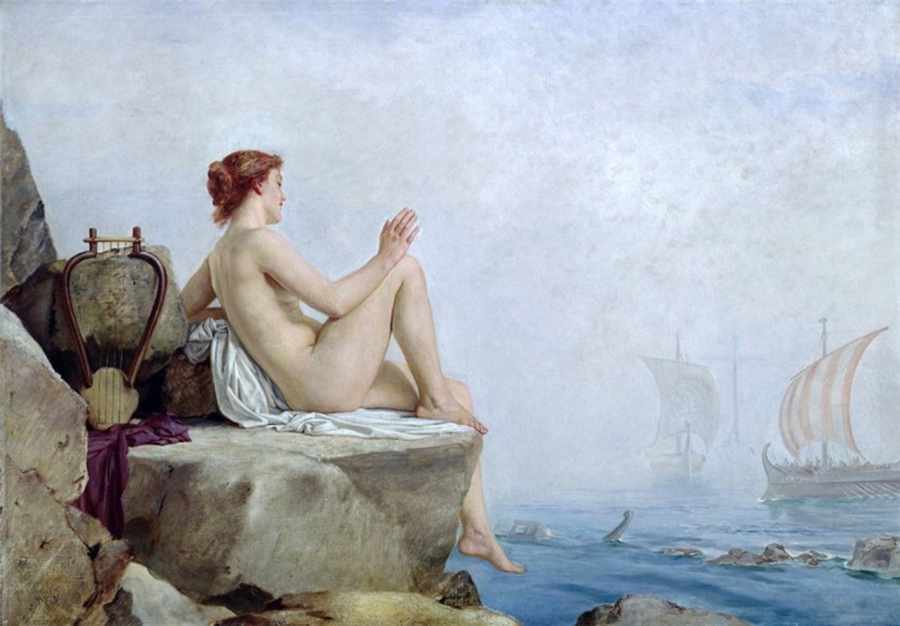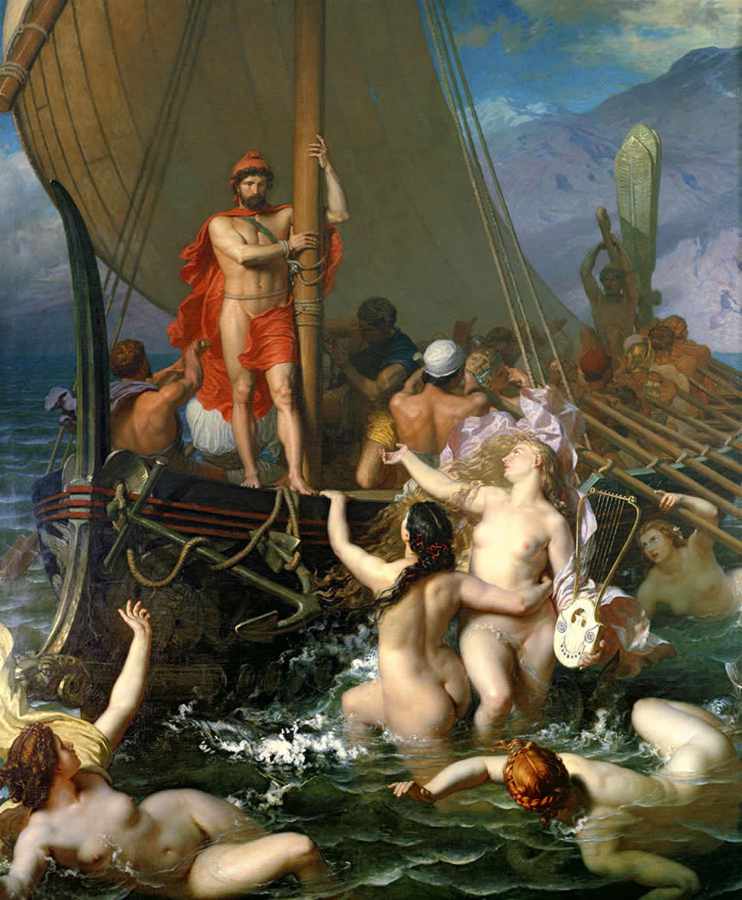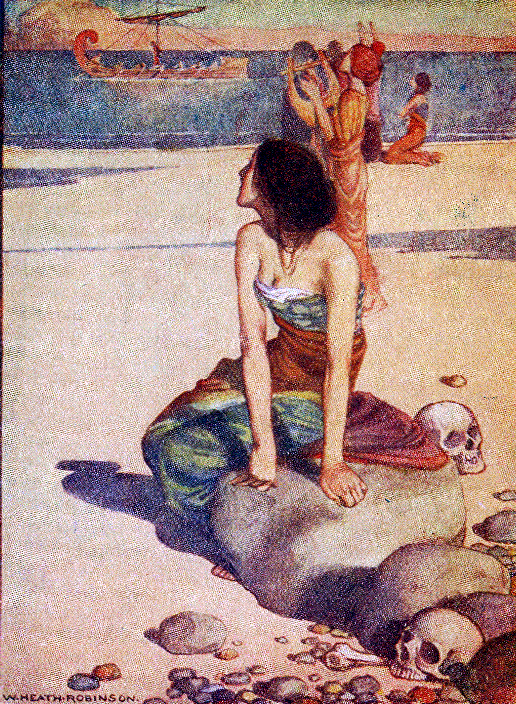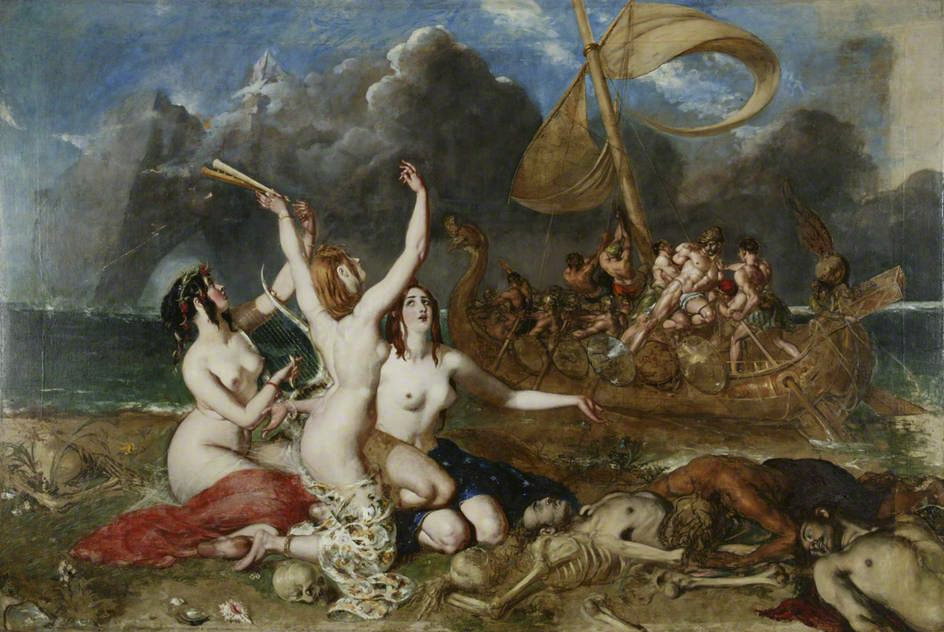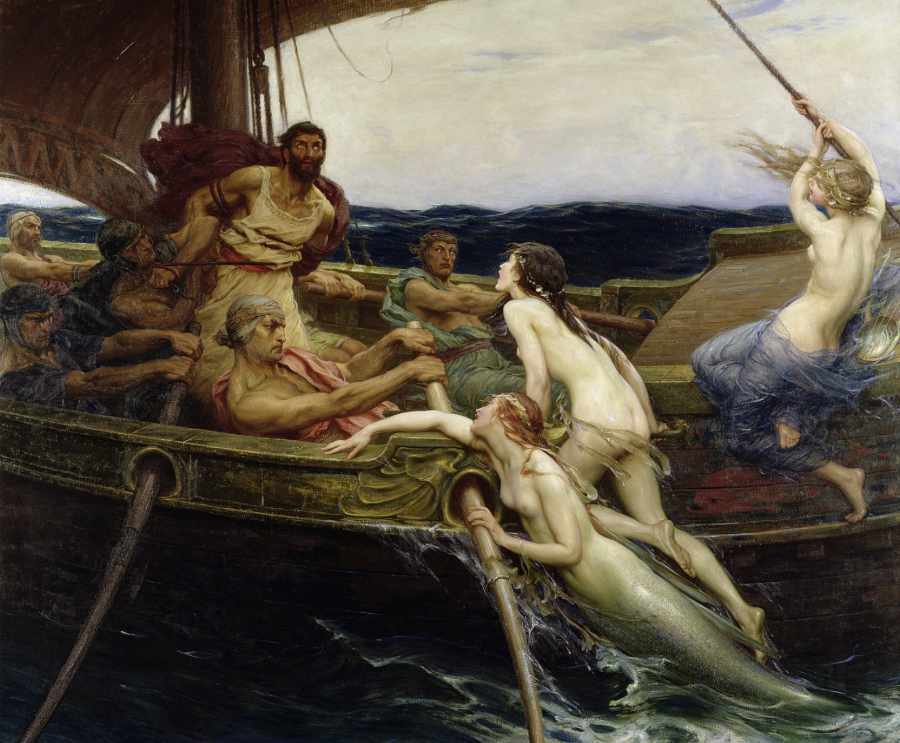In Greek mythology, the sirens were human-like beings with alluring voices; they appear in a scene in the Odyssey in which Odysseus saves his crew’s lives. Roman poets placed them on some small islands called Sirenum scopuli. In some later, rationalized traditions, the literal geography of the “flowery” island of Anthemoessa, or Anthemusa, is fixed: sometimes on Cape Pelorum and at others in the islands known as the Sirenuse, near Paestum, or in Capreae. All such locations were surrounded by cliffs and rocks. Apollonius of Rhodes in Argonautica (3rd century BC) described the sirens in writing as part woman and part bird. By the 7th century BC, sirens were regularly depicted in art as human-headed birds. They may have been influenced by the ba-bird of Egyptian religion. In early Greek art, the sirens were generally represented as large birds with women’s heads, bird feathers and scaly feet. Later depictions shifted to show sirens with human upper bodies and bird legs, with or without wings. They were often shown playing a variety of musical instruments, especially the lyre, kithara, and aulos. Sirens continued to be used as a symbol for the dangerous temptation embodied by women regularly throughout Christian art of the medieval era.
| Alias Siren |
| Real Names/Alt Names Thelxiepeia/Thelxiope/Thelxinoe, Molpe, Himerope, Aglaophonos/Aglaope/Aglaopheme, Pisinoe/Peisinoë/Peisithoe, Parthenope, Ligeia, Leucosia, Raidne, Teles |
| Characteristics Musician, Myths & Legends, Monster Mash, Prehuman Epoch, Greek |
| Creators/Key Contributors Unknown |
| First Appearance Greek mythology |
| First Publisher ○ |
| Appearance List Literature: Homer’s Odyssey (c. 8th century BCE, English 1614), Apollonius of Rhodes’ Argonautica (3rd century BC), Physiologus (illustrated manuscript, 2nd century AD), Liber Monstrorum (early 8th century AD), Byzantine dictionary Suda (10th century), Geoffrey of Monmouth’s Historia Regum Britanniae (c. 1136), Dante’s Purgatorio (14th century, second canticle of the Divine Comedy), Bulfinch’s Mythology (1913), et. al. Comics: Many, incl. Heart Throbs #2 (Oct 1949), Strange Worlds (Nov 1951), Feature Comics #72 (Oct 1943), and Whiz Comics #47, 121, etc. |
| Sample Read Bulfinch’s Mythology by Thomas Bulfinch [Internet Archive] |
| Description In Greek mythology, the sirens were human-like beings with alluring voices; they appear in a scene in the Odyssey in which Odysseus saves his crew’s lives. Roman poets placed them on some small islands called Sirenum scopuli. In some later, rationalized traditions, the literal geography of the “flowery” island of Anthemoessa, or Anthemusa, is fixed: sometimes on Cape Pelorum and at others in the islands known as the Sirenuse, near Paestum, or in Capreae. All such locations were surrounded by cliffs and rocks. Apollonius of Rhodes in Argonautica (3rd century BC) described the sirens in writing as part woman and part bird. By the 7th century BC, sirens were regularly depicted in art as human-headed birds. They may have been influenced by the ba-bird of Egyptian religion. In early Greek art, the sirens were generally represented as large birds with women’s heads, bird feathers and scaly feet. Later depictions shifted to show sirens with human upper bodies and bird legs, with or without wings. They were often shown playing a variety of musical instruments, especially the lyre, kithara, and aulos. Sirens continued to be used as a symbol for the dangerous temptation embodied by women regularly throughout Christian art of the medieval era. |
| Source Siren (mythology) – Wikipedia |
